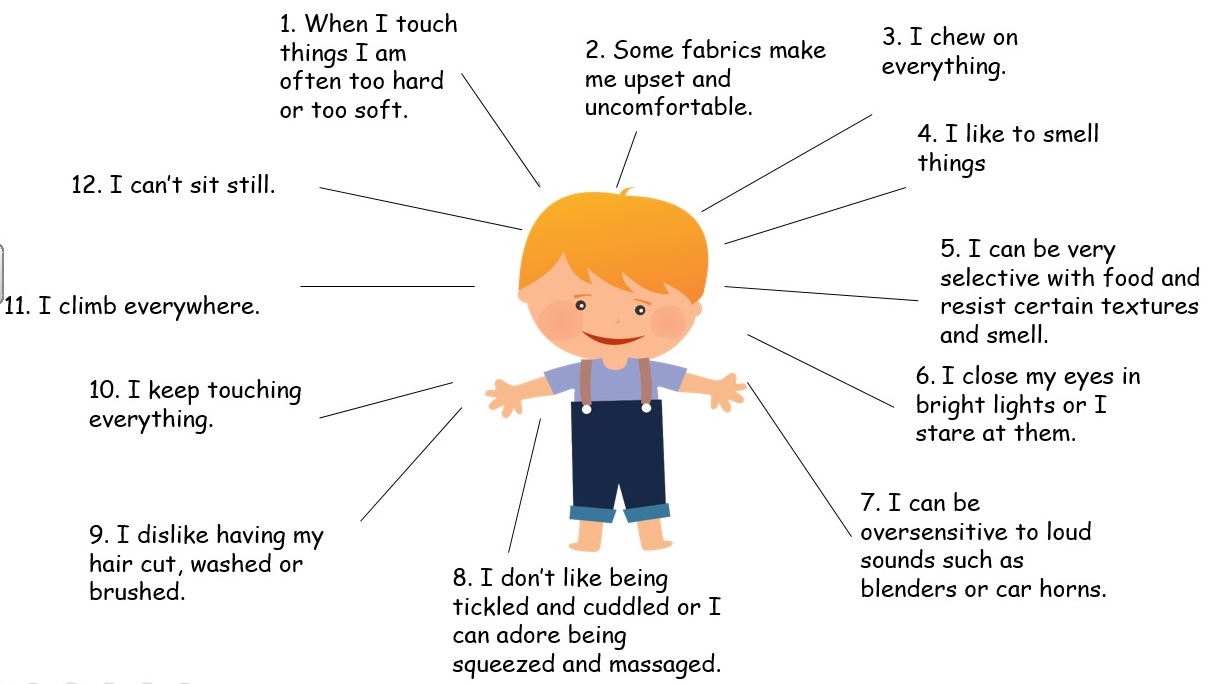Sensory at Home
Parents & Carers often ask us for help with the sensory needs of their children.
This page will give suggestions and advice for helping with sensory issues at home.
If you would like further advice or to discuss any sensory issues please email Kasia (Northway's Sensory Lead) at kmazurkiewicz@northway.barnet.sch.uk
Does your child do any of these?...

SEE BEHAVIOUR, THINK SENSORY!
If your child displays any of these behaviours, look at the corresponding number in the list below for some practical ideas you can try at home.
(**Words in red are links to suggestions of where to buy or how to make an item or further information)
1. My sense of proprioception is not working properly. Exercise like jogging, bouncing, spinning, crawling and heavy work activities are very helpful.
2. I am over responsive to touch. My skin doesn’t tolerate certain fabrics and labels can be painful. Make sure the labels are cut off and I can wear something I am familiar with (like an old trusty vest/t-shirt) underneath. Let me put socks on my way so they don’t bother me. It may be necessary to buy seamless underwear/socks.
3. Offer me some chewy toys. I might have to try quite a few before I find the right one. Crunchy food might be helpful (like carrots, celery sticks, apples etc.).
4. Offer me a wide range of smells everyday, smelly bottles are very useful.
5. Be understanding if you want me to try something new, look for similar textures and smells to food I already like.
6. I am over or under responsive to visual input. Sunglasses or a hat might be useful. If I’m seeking visual input, there are many light toys or sensory timers/bottles I can play with.
7. I might need ear defenders. Help me avoid loud, crowded places. It could be overwhelming and it might cause a sensory meltdown.
8. Light touch is alerting, deep touch is calming. Offer me as much deep touch as I need - squeeze and hold me tight!
9. I am over sensitive to touch. Touching my hair can feel painful. Try massaging my head first and provide deep touch to rest of my body.
10. Offer me a fidget toy to play with and provide as many movement breaks as possible.
11. I need extra vestibular input. Spinning, bouncing and swinging will help.
12. Weighted blankets (speak to Kasia about this, if you think you may need one) and movement breaks should help.
For more information about sensory issues visit the National Autistic Society's (NAS) website.
